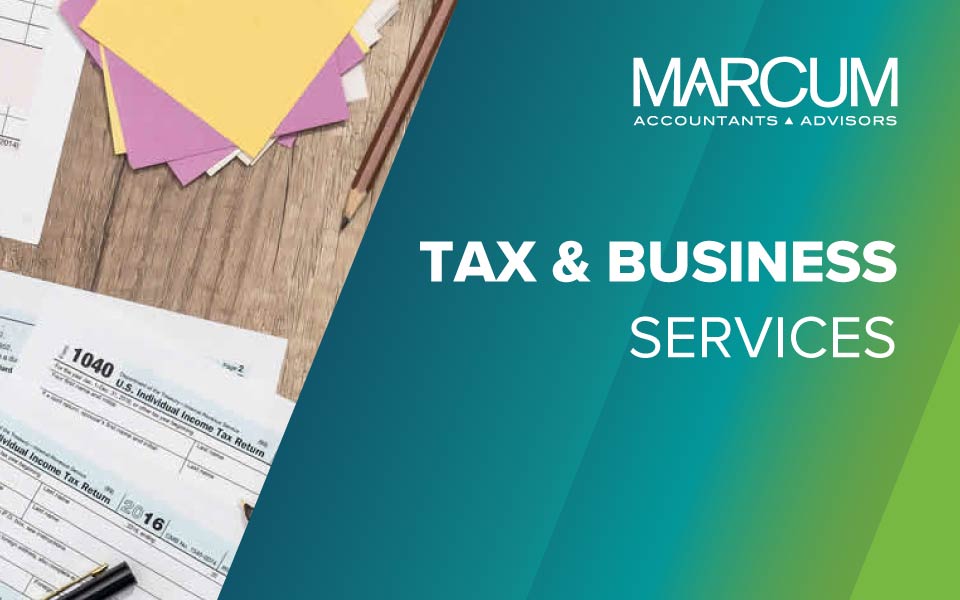S Corporations – Increasing Scrutiny by the IRS and What You Need to Know Now to Survive an Audit
By Monte Colbert, Director, Tax & Business
The IRS recently selected at random, 5,000 S corporation tax returns and gathered data for a compliance study which the Government Accountability Office (GAO) analyzed. As a result of this analysis, a report was issued citing three main issues. This article will discuss those findings and provide advice on what you or your tax professional should be doing to withstand the scrutiny of an IRS audit with regard to these issues. Effective tax planning starts with an understanding of the issues and by implementing a well planned strategy. That starts with having the proper documentation to support a position.
Some Key Benefits of S CorporationsS corporations are a tax accounting classification rather than a legal classification. They are created when an eligible corporation elects to be treated according to the rules of Subchapter S of the Internal Revenue Code. It is a flow through entity meaning that, generally, the S corporation pays no tax but rather the income, losses and other reportable items, pass through (flow through) to the shareholders’ individual tax returns. One of the most significant potential tax benefits may be from payroll tax savings. The profits that pass through to shareholders and that are reported on Form K-1 are not considered salary. These pass through profits are not subject to payroll taxes. Therefore, there is incentive to reduce shareholder compensation and, therefore increasing the amount of pass through profits that escape payroll taxes. On the other hand, taxpayers may want to increase wage compensation, which, in turn, reduces the corporation’s income in years when the entity may be subject to a built-in-gains tax.
Another potential tax benefit of S corporations is losses generated may be used to offset other taxable income, providing the shareholder has basis in the S corporation. Basis also determines the amount of tax free distributions that may be received by a shareholder and is also used in determining any gain or loss from the sale or disposition of the S corporation stock.
Based on the discussion above, the reporting of reasonable compensation and the proper calculation of basis is very high on the IRS’ list of priorities. Other common misreporting of items that lead to potential tax savings to shareholders was cited in the study. These included claiming shareholder personal expenses, unsubstantiated expenses, and misapplied expenses on the S corporation return. While these last three issues can be found on most any type of business tax return, the problem can be largely eliminated by avoiding the comingling of business and personal bank accounts and expenses. The issues of reasonable compensation and shareholder basis are however more unique to S corporation returns and will be the focus of this article.
Reasonable CompensationAs an incentive to minimize the increasing burden of federal, state, and local employment taxes and reporting requirements, many S corporation shareholders choose to either pay less than reasonable compensation or none at all. Instead they may make cash distributions of the profits that have already been taxed to them and ignore the rules regarding reasonable compensation. The general IRS rule is that owners of a profitable S corporation must receive “reasonable” compensation for services rendered under the premise that someone must be managing and operating the corporation. This tax avoidance technique has moved the IRS to vigorously pursue and use their authority to adjust S corporation income to reflect reasonable compensation. As a result, the IRS may impose back payroll taxes along with failure to file, failure to deposit taxes, and negligence penalties and interest.
The IRS provides no hard and fast definition of “reasonable” compensation. However, its guidance suggests that reasonableness is determined by factors including:
- number of hours worked,
- tasks performed,
- intricacy and size of the business,
- corporate compensation policy,
- consistency of a shareholder’s salary history,
- economic conditions,
- and according to IRS regulations, a direct comparison of industry standard wages paid for like services, by like enterprises, under like circumstances.
Certain fringe benefits that are to be included in the wages of greater than 2% or more shareholders also enter into the determination of reasonableness. Since the analysis of reasonable compensation is a subjective one based on facts and circumstances, it seems that the IRS is currently focused on examining S corporations that pay little or no wages but pay large distributions. Taxpayers will typically not prevail in cases such as these. The bottom line is that a good defense is a strong offense and the better the documentation and business reasons for determining the compensation, the more likely the taxpayer will prevail when challenged by the IRS. Marcum’s tax and advisory team are familiar with these challenges and can assist you in building a better model for your S corporation that may be exposed to these issues.
Basis in generalThe GAO surveyed various S corporation owners and as a group, these owners agreed the chore of calculating and tracking their basis is one of the toughest challenges in complying with the S corporation tax rules. While the responsibility for keeping track of basis is an individual rather than a corporate one, individual taxpayers most probably assume that the practitioner responsible for preparing the S corporation return is also keeping track of their basis. This assumption should not be made and re-creating the basis after many years of neglect can be a daunting task for even the most qualified professional. So much so that it has been recommended to Congress that the responsibility of the basis calculation be shifted to the S corporation. Be that as it may, properly determining a shareholder’s basis is critical for three primary reasons:
- it sets limits on the amount of corporate losses thatcan be deducted by shareholders,
- it determines the upper limit for the amount of tax-free distributions that can be received from the corporation, and
- it is necessary for determining the gain or loss when stock of an S corporation is sold or disposed.
Determining a shareholders’ initial stock basis depends on whether the shares were acquired through purchase, initial formation, received for services provided to the S corporation, conversion from a C corporation to an S corporation, gift, or inheritance. Once initially established, a shareholder’s stock basis is adjusted annually by various items of corporate income or loss, deductions, business credits, cancellation of debt income, and distributions made to the shareholders. There are specific ordering rules that govern these items. Certain special elections that affect the ordering rules need to be made timely and can have a significant impact on the ability of the shareholder to deduct losses. There are also specific elections that treat the timing and calculation of basis when the stock of the S corporation is sold or disposed of. Each year basis calculations should be updated. This is a responsibility of the taxpayer. Furthermore, it should not be automatically assumed that a shareholder has enough basis to deduct losses. It is also a prerequisite to determine if the potential for any tax savings exists. This is just a partial list of items that impact stock basis and the IRS recognizes that the many special rules affecting these calculations are far too complex for most taxpayers and many general practitioners to understand. It should come as no surprise that the IRS is now focused on the proper calculation of S corporation stock basis. This determination may have a material effect on the tax revenues that are generated from the discovery of erroneous calculations.
Debt BasisNot unlike stock basis, the rules governing debt basis are mired in complexity. S corporation shareholders obtain basis from debts that are owed by the corporation directly to the shareholders, including loans that are made to the S corporation by the shareholder during the current tax year. This is beneficial because shareholders can deduct losses against debt basis after their stock basis has been reduced to zero. The same pass-through items of loss and deduction that affect stock basis are used to reduce debt basis. However, one significant difference is that distributions do not reduce debt basis. Shareholder loans should be properly documented, and should bear a rate of interest that is at a minimum, equal to the Applicable Federal Rate (AFR) as published by the IRS. Simply ensuring proper documentation strengthens the argument that it is indeed a loan. This helps to avoid a challenge by the IRS that the debt could be deemed as a second class of stock. The consequence of this determination would be sufficient cause for the termination of the corporation’s status as an S corporation. The corporation would then be treated as a C corporation subject to double taxation, lose the other benefits of being an S corporation, and would not be able to re-elect S corporation status for five years. There are several tests and also safe harbor provisions for certain types of debt contained in the Internal Revenue Code and Regulations that provide guidance in this area. Other items of interest to the IRS with regard to debt basis are multiple shareholder loans. When multiple shareholder loans exist, losses are required to proportionately reduce the basis of all loans to shareholders. Therefore, unless there is future pass-through income that increases debt basis, a taxable gain may result to the shareholder if the corporation repays all or part of a debt to a shareholder and the principal payment exceeds the debt basis. Loans to the S corporation by the shareholder should be direct with no intermediary and should be from the shareholders personal resources. The loan should have economic substance which requires the occurrence of something other than a mere repositioning of funds between related entities through intercompany transfers. Essentially, there should be an actual outlay of resources by the shareholder. Another situation in which the IRS almost always prevails is when an S corporation shareholder tries to establish basis by guaranteeing the debt from a loan made by a third party to the S corporation, even if the debt is secured by the shareholder’s property.
Being ProactiveThis article has barely scratched the surface of the myriad of complex situations that may occur when shareholders form, deduct losses, take distributions from, lend money to, or sell or dispose of their S corporation. The IRS now has a better understanding through their quantitative studies and surveys that there are major deficiencies in the calculation of basis by taxpayers and their compliance with the rules for determining reasonable compensation. With large budget deficits looming, the IRS has stepped up their enforcement of these rules and have focused their immediate attention to the low hanging fruit. This article has discussed some of the issues that the IRS can immediately attack under audit, and that are easiest for them to prevail upon. This should be addressed in advance of any problems arising. Thoroughly review your S corporation files with your tax professional and make certain that the documentation for the determination of shareholder’s compensation exists. If there are no wages, low wages, or large distributions being made, then examine and document the validity of these positions. Review the existence and accuracy of basis schedules. These should be updated annually as required by IRS regulations and will be needed to determine the tax treatment of distributions, losses, and the gain or loss on the sale of the S corporation. Their absence may result in unexpected and harsh consequences.




















